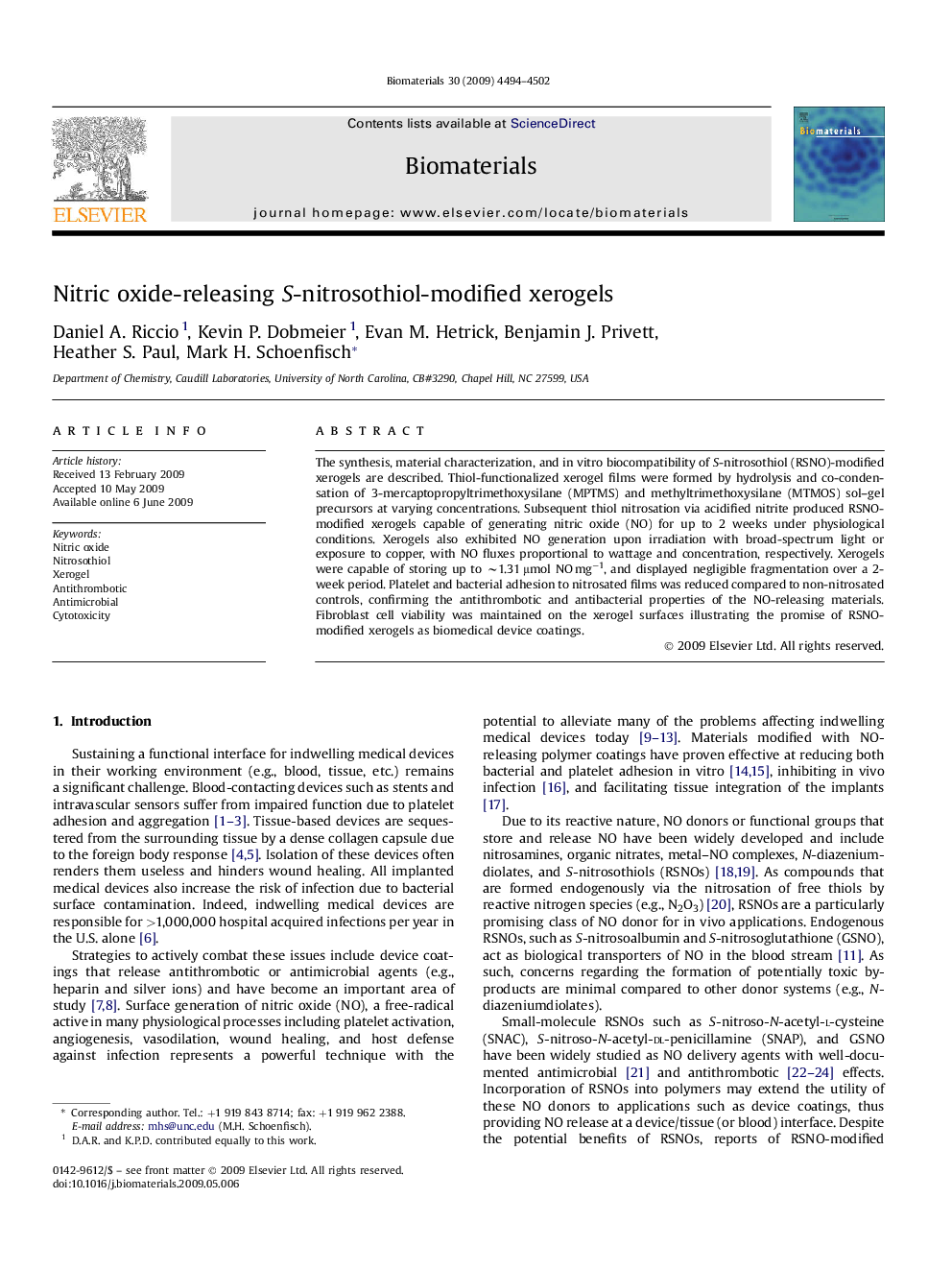| Article ID | Journal | Published Year | Pages | File Type |
|---|---|---|---|---|
| 10230052 | Biomaterials | 2009 | 9 Pages |
Abstract
The synthesis, material characterization, and in vitro biocompatibility of S-nitrosothiol (RSNO)-modified xerogels are described. Thiol-functionalized xerogel films were formed by hydrolysis and co-condensation of 3-mercaptopropyltrimethoxysilane (MPTMS) and methyltrimethoxysilane (MTMOS) sol-gel precursors at varying concentrations. Subsequent thiol nitrosation via acidified nitrite produced RSNO-modified xerogels capable of generating nitric oxide (NO) for up to 2 weeks under physiological conditions. Xerogels also exhibited NO generation upon irradiation with broad-spectrum light or exposure to copper, with NO fluxes proportional to wattage and concentration, respectively. Xerogels were capable of storing up to â¼1.31 μmol NO mgâ1, and displayed negligible fragmentation over a 2-week period. Platelet and bacterial adhesion to nitrosated films was reduced compared to non-nitrosated controls, confirming the antithrombotic and antibacterial properties of the NO-releasing materials. Fibroblast cell viability was maintained on the xerogel surfaces illustrating the promise of RSNO-modified xerogels as biomedical device coatings.
Related Topics
Physical Sciences and Engineering
Chemical Engineering
Bioengineering
Authors
Daniel A. Riccio, Kevin P. Dobmeier, Evan M. Hetrick, Benjamin J. Privett, Heather S. Paul, Mark H. Schoenfisch,
